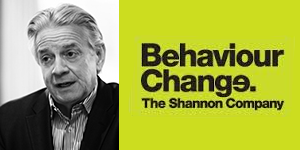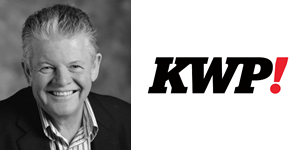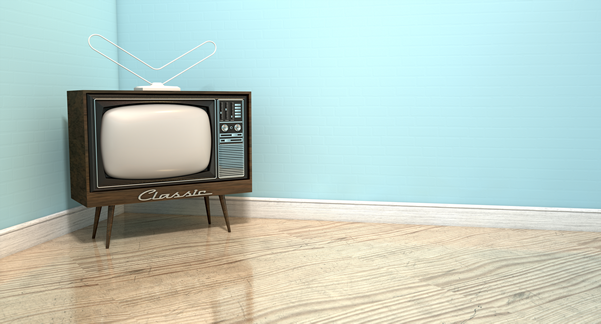How Good Is Your TV Spot?

Over the years I’ve had a love-hate relationship with Advertising Agencies or Media Agencies when it’s come time to create the all-important TV ad for my radio station. I’ve met some terrific agency creatives around Australia but also some also-rans. I’ll never forget the time an agency came with ‘Radio Active’ for Fox.FM at the height of the anti-uranium protests complete with Radioactive Free Zones signs springing up all over the place.
Radio Stations often use television ads to build awareness especially during a ratings survey. The idea is to retain your current listeners; regain listeners you’ve lost & take what you can from other stations.
The right TV spot can also reinforce the core audience’s reason for listening in the first place & squeeze out even more TSL.
A lot of radio stations run TV ads that reinforce the brand. Advertising agencies love branding because they can be more creative. They win awards for branding. A lot of the ads that win awards don’t work because they don’t move the product off the shelf. You have to ask for the order when you advertise your radio station. It has to be based on a key benefit for the target audience. Something they really care about.
During my time as a programmer, I worked with three exceptional media agency leaders. I asked them for their perspective.
 Bill Shannon, CEO of The Shannon Company
Bill Shannon, CEO of The Shannon Company
‘There’s probably no such thing as a formula for creating an effective TV spot promoting a radio station as the most effective ads normally break the rules, with the exception of one rule.
There are, however, a few fundamentals worth knowing for creating effective spots.
So here goes.
Whether it’s a TV ad for a radio station or a radio ad for a TV station, a print ad for a radio station or a digital banner for a radio station, the one rule you don’t break is, for an advertisement to be effective it must contain a proposition.
This rule has been embraced by advertising practitioners for yonks; way back in 1759 Samuel Johnson said, “Promise, large promise, is the soul of an advertisement.”
So with this in mind, do the hard yards before you do anything else and find a single minded proposition for your radio station.
In short, what’s the one thing you want your target audience to remember after they’ve seen your spot?
You won’t always find a unique proposition (“unique” is the most overused word in advertising), but at the very least you should look for a distinctive one.
I know I may sound old fashioned but just accept the “proposition” rule without argument.
It doesn’t matter how exciting your execution might turn out, if your spot doesn’t have a single minded proposition it will die.
It never fails to surprise me – even shock me – how many people in the business not only ignore this principle for creating effective communications, they have no idea of its importance.
Now don’t get me wrong, just because I’m pushing the proposition line doesn’t mean your spot has to be boring. And you don’t have to hit them over the head with your proposition.
Mind you, sometimes that’s not a bad thing. Though some of the more effective spots that I admire deliver the proposition in a subtle way, even an esoteric way.
But the proposition is there all the same. Make no mistake.
Where do you find a single-minded proposition? Forget standing in the shower waiting for that light bulb moment. There’s no substitute for sound, strategic thinking and investigation. It’s called hard work and, as Obvious Adams noted, “…. thinking is the hardest work many people ever have to do, and they don’t like to do any more of it than they can help.”
It’s hard to come up with a great idea in a vacuum. I apologise if I sound like I’m telling you how to suck eggs but, again, it never fails to amaze me how many “creatives”, particularly in this digital era, think they can dream up an idea by listening to themselves. Okay call me a curmudgeon but I think one of the most important assets a creative can own is the ability to listen.
So do some research, for a start, talk to listeners who are already listening to your station.
Ask them what they hear, “even see”, when they’re listening to your station. You’ll be surprised how much a listener can use his or her “mind’s eye” when describing stuff, they’re listening to.
This sort of stuff is great creative stimuli.
And most of all, it’s on target!
Talk to your target audience who are not listening to your station.
Find out why not.
Maybe your station does play what they’re looking for but they just don’t know it because they haven’t been told it, in an imaginative way!
Maybe they’ve tuned in once or twice only to get the wrong impression and quickly tuned out.
Your TV spot is a good way of getting them back, especially if you know what they’re looking for. And, low and behold, what they’re looking for is what you play.
Whatever you do don’t promise them something you can’t or don’t deliver.
That’s when they tune out forever.
Now we’ve got the mandatory proposition out of the way, let’s consider a fundamental or two for an effective spot.
Radio stations have their own tone and manner so make sure your spot reflects this tone and manner.
What’s the use of coming up with an execution that presents a different style and sound to your station.
Sure you might get them to tune in but as soon as they tune in, they tune out, feeling tricked. And disappointed. And you’ve got Buckley’s of getting them back.
Now the next thing may sound like a contradiction after everything I’ve said so far, but even if your station is a “noisy” one like Classic Rock, your spot doesn’t need to be. Sometimes a quiet, calm delivery has more cut through. As long as the way it feels reflects Classic Rock.
A quiet spot for Rock seems like a nice piece of juxtaposition.
We’ve got the single minded proposition solved, we’ve got an execution to reflect the same tone and manner, now what about the all-important “call to action?”
Like, who do I turn to? Where do I find you on the dial? What is the band width and numbers? Don’t forget to ask for the order.
One more thought, TV spots for radio stations offer a great opportunity to do something visually powerful in an unpredictable way. For instance, how do you show talk back without showing a talking head (Jock) or show music without showing a band playing or a vocalist singing?
Look for a more imaginative way to visually show what you listen to; like the reactions of listeners to the views of a Jock – funny, sad or downright shocking. Or, find a visual device to reflect your music. Remember the “spirit” drop we created for 3XY where the images of our rock stars were contained in an animated drop supported by the line, “The spirit of rock and roll.”
A couple of examples of good “visual sound”:
1. Nova’s launch using animated logo (Great focus on hand and call sign).
2. NOVA 100 – Sounds Different Campaign 2011 – A baby lies in a cradle, looking unhappy. It starts to cry, but the sound of a chainsaw comes out of its mouth –
{youtube}9ZJCK3oqZcM{/youtube}
3. BBC Four – Glastonbury Music Festival Campaign 2010-11
A man is driving his car, heading to the Glastonbury festival, and turns his car radio to BBC Four, the festival Sponsor. As he does, mud starts pouring into his car through the speakers in the door.
In a nutshell:
1. Proposition
2. Tone and manner
3. Visual sound
4. Call to action
 Andrew Killey– Chairman KWP! Advertising Pty Ltd & owner of brand A
Andrew Killey– Chairman KWP! Advertising Pty Ltd & owner of brand A
‘There are a variety of channels to market your product. Agencies make the mistake of focussing too much effort on content.
Compared to other products radio stations are great at being single minded on what the proposition should be. When you engage an agency the brief has to be specific. Giving creatives plenty of scope is bullshit.
Radio stations know so much about their business They are good at getting the brand right. They engage socially well with their audience. They’re really good at speaking in a secret language to their audience
There’s a huge opportunity for radio stations to showcase their content. Stations should get more disruptive with TV like running ten different 15 second ads.
Some radio stations ads can be quite masterful.
Social media is liberating but is also a dumbing down tool’.
 Greg “Sparrow” Graham – Marketing and New Business Director at GroupM
Greg “Sparrow” Graham – Marketing and New Business Director at GroupM
The TV spot has to reflect the personality of the station or the session/hosts and be authentic. It’s needs to give me a simple reason to tune in. That may be a rational or emotional trigger however it has to drive listeners or get me to listen longer. Plus, place it in the right context and programme where it stands out and connects with the viewer and doesn’t get lost in the clutter. Don’t forget the basics and get carried away with creative wank. Where do I tune in, at what time with a clear call to action? It’s doesn’t need to win a creative award it needs to drive station listeners and ratings.’

So the challenge is to make a strategic & also creative TV spot that cuts through by impacting people’s perceptions of your radio station & increases your station’s share percentage.
 Greg Smith is an inductee into the Australian Radio Hall of Fame, and a Director of Radio Today.
Greg Smith is an inductee into the Australian Radio Hall of Fame, and a Director of Radio Today.



